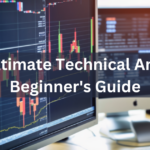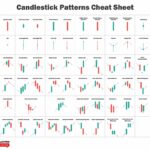Systematic Trading (Oct 2021): FB & SIA
“The goal of a successful trader is to make the best trades. Money is secondary.”
– Alexander Elder
Welcome to the second part of our series on Systematic Trading!
If you don’t have a clue on what systematic trading is, do check out the earlier part of this series to get a better idea of what to expect.
At the risk of sounding like I’m nagging (but you do know that this is for your own good, right?), I can’t emphasize enough how our content is for educational purposes.
Please, do your own due diligence and practice adequate risk-management.
Just like Dr. Elder’s quote above, we are looking to make the best trades.
But your next question may be – what constitutes the best trades?
While there are guidelines like the risk-to-reward ratio, and following a system to trade, there are also other subjective factors. Examples include one’s risk appetite, trading style, and even trading capital.
My point is, the idea of what makes the best trade in my opinion, might not be so in your case.
So while I will elaborate on my considerations in the examples below, remember that these are just pointers for your reference. On one hand, it is to show you how systematic trading works. On another hand, this is not the only method to trade the stock market.
It’s not always such a straightforward case in which only 1 method applies, right? In the end, it’s about finding what works for you and refining that method to produce the best results.

Quick Comments On Stock Selection: FB & SIA
Initially I thought about picking a stock from NYSE, since TESLA was already featured previously from the NASDAQ. But then, thinking about the latest happenings, wouldn’t it be more interesting to look at Facebook? Given the recent slew of events with the company, I’m sure some of you will be looking for opportunities in this counter.
As for the other one, considering our largely local (Singapore) following, coupled with the latest news… It made sense to me to look into Singapore Airlines (SIA) since more vaccinated travel lanes have been announced. (And, I’ve recently received an email from Scoot – it’s been such a long time!) Though truth to be told, this is my first time screening and looking at listings within SGX, since I normally trade on NASDAQ and NYSE.
But enough on that. It’s about how systematic trading works, and how this method can benefit you.
On that note, feel free to leave a comment on your stock suggestions. I might pick them out to highlight in our next article in this series.
Now without further ado, let’s get on with the charts.

Facebook, Inc. (NASDAQ: FB)
1. About The Company
“We build technologies that help people connect with friends and family, find communities, and grow businesses.”
Source: Facebook’s about page
2. Position Trading (Daily)
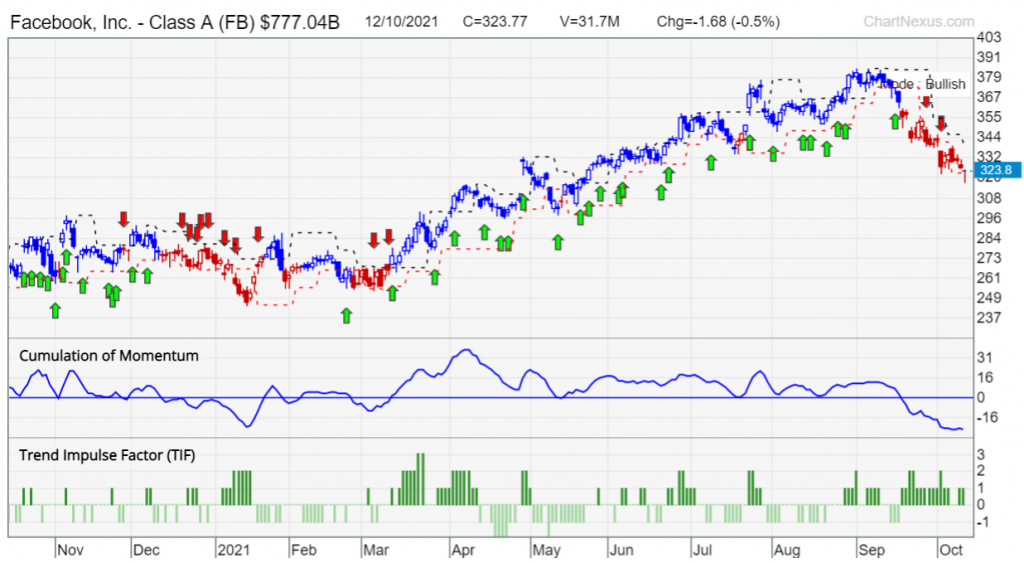
FB has had a good bullish run from April to September. For position daily trades, the estimated duration of 3-9 months shows clearly in this example, where the trade would last for approximately 5 months.
Assume an entry on the third green arrow on 5th April at $310, which is after breaking out of the consolidation phase. For the exit strategy, this would be when the red candle appears, marking the low to exit on 22nd September at $354.
Of late, shorting signals have appeared on 28th September at $341, and 4th October at $326. FB appears to be bearish for the short-term, and this downward momentum seems to be going strong – as shown by the dark green bars on the Trend Impulse Factor (TIF).
For traders looking out for further shorting opportunities in FB, this is where position-sizing plays a part. Remember in the earlier part of the series, I mentioned a 50/30/20 allocation? This is because the price has already moved down significantly, and typically it would not be wise to chase the stock (this applies for both upward and downward momentum).
Do note also that the overall mode remains bullish. So even though there are shorting signals, it might not be the most ideal shorting candidate compared to other counters which are already bearish.
3. Swing Trading (Weekly)
Given that the price has come down after a bullish run, it would be reasonable to look out for opportunities to enter a swing trade. Indeed, there has been a recent swing set-up spotted:
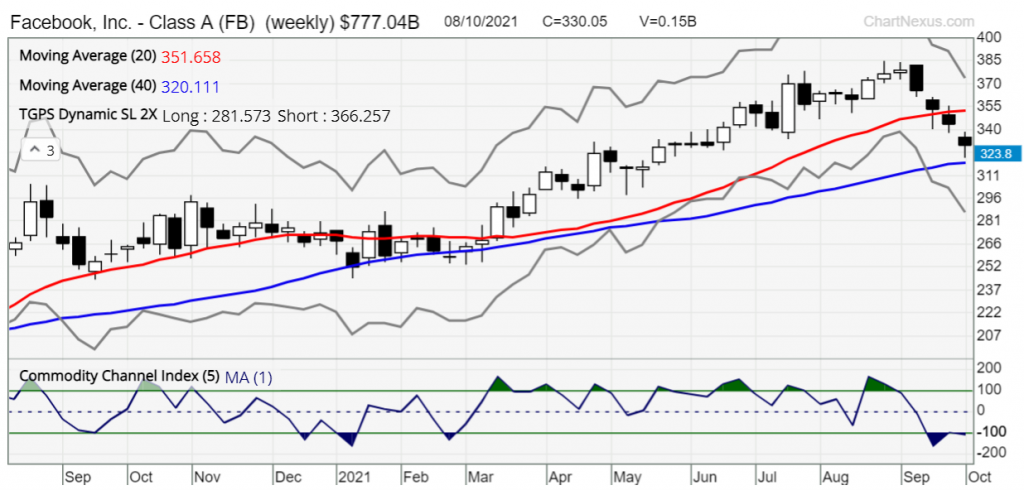
The candle for the week of 20th September fulfills the swing set-up criteria. What is missing now, is the entry trigger. That is, the price has to break the high of the previous week’s candle for the trade to be executed.
Imagine if there was no criterion for the entry trigger, and you had executed the trade just based on the swing set-up. In which case, you would currently be sitting on losses, as prices have yet to reverse upwards. If you had not placed a stop-loss on this trade, then you might want to think about your exit plan and how much you would be willing to lose if the price continues on its bearish momentum.
In this case, we would continue to mark the high of the previous candle in order for this trade to be triggered.
4. To Trade Position Daily Or Swing Weekly?
Rather than anticipating which one to go with, it pays to see where the prices go. Then, with the information on hand, be flexible and make informed decisions.
So if it continues downwards, I would be looking out for a shorting signal.
Conversely, if it goes upwards, I would keep a lookout for a breaking of high on the weekly prices.
At this moment, I would be more comfortable with a swing trade since the mode is still bullish. Hence, the moving averages are still sloping upwards as well.
Although it can be tempting to buy into analyst reports, or be influenced by personal sentiments about the situation, it pays to be objective on the price action. Case in point: if you had felt that FB was “expensive” when it was at the range of $290, well, it went on to climb $100 more until this recent pullback.
Let’s just say that it always pays to invest in your own knowledge.

Singapore Airlines (SGX: C6L)
1. About The Company
“Singapore Airlines is the flag carrier airline of Singapore with its hub at Singapore Changi Airport. The airline is notable for using the Singapore Girl as its central figure in corporate branding.”
Source: Wikipedia (for lack of a succinct description on SIA’s corporate website)
2. Position Trading (Daily)

SIA had gapped up just this week – likely due to the news on the increase in number of vaccinated travel lanes. While this upward momentum is currently strong – as seen from the tall dark green bars on the TIF – the entry would not have been triggered. This is because the price has yet to break above the high of the previous day.
Prior to this gap-up, prices had been trading in a range since June, which wouldn’t be an ideal candidate for position trading (noisy stock).
3. Swing Trading (Weekly)
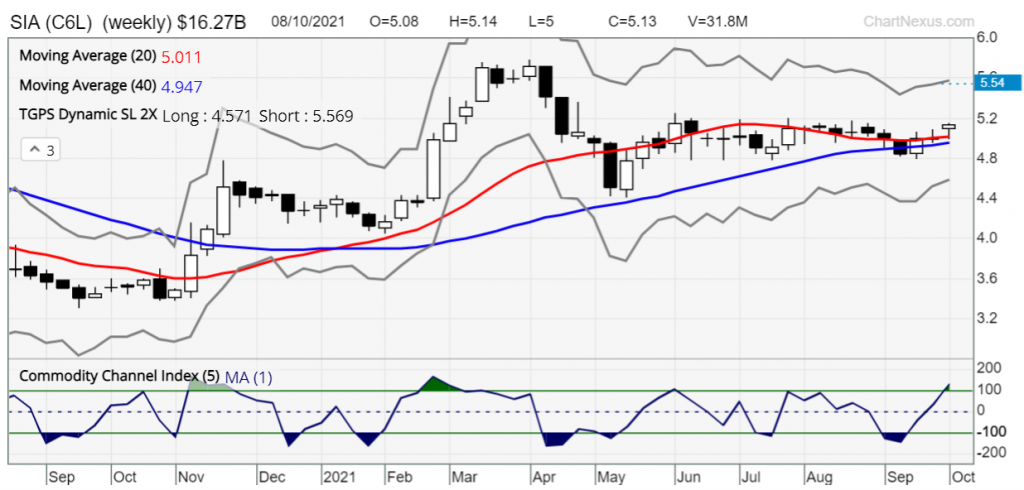
The candle on 6th September almost fulfilled the swing set-up criteria, except that the 20-week moving average was arguably not sloping upwards. This makes the most recent valid set-up in May instead, with the trade being triggered 3 weeks later after breaking the previous candle high of $4.88.
4. To Trade Position Daily Or Swing Weekly?
As a matter of risk-to-reward…
The swing trade would have been a better decision. Considering that it’s already near the support level of $4.40, there is room to the upside towards the resistance around $5.70. Although it did not eventually reach that level, the subsequent candles still had prices moving upwards.
As for the position daily trade, in the event that prices pull back, the previous resistance would act as the support level, which is about $5.10. Although the recent arrow makes for the second valid one, which means it’s not too late to take on a position, prices have cleared the 6-month high. At this point, room for movement to the 52-week high around $5.70 is not as ideal from a risk-to-reward perspective.
Conclusion: Facebook & Singapore Airlines
From the examples above, you might draw the conclusion that trading in the US markets would be more action-packed compared to a local counter like SIA.
That aside, it is also about following a system to identify trade set-ups, and have rules on the entry and exit. In the short examples above, some have proved to be profitable, and some are still pending the upcoming price action.
Whichever the case, I hope you gain a little more clarity on how trading systematically works.
Even if you don’t fully grasp it now, if the process of following a system produces results… Then isn’t it worth investigating in greater detail?
After all, this is a life skill that could potentially impact huge changes in your financial situation.
Swayed by emotions? Unsure when to take action? While discretionary trading is not bad, perhaps systematic trading is what works for you. Discover the intricacies of it as we journey along this series.
If you’d like to learn more about systematic trading to better time your trade entries, click the banner below:








